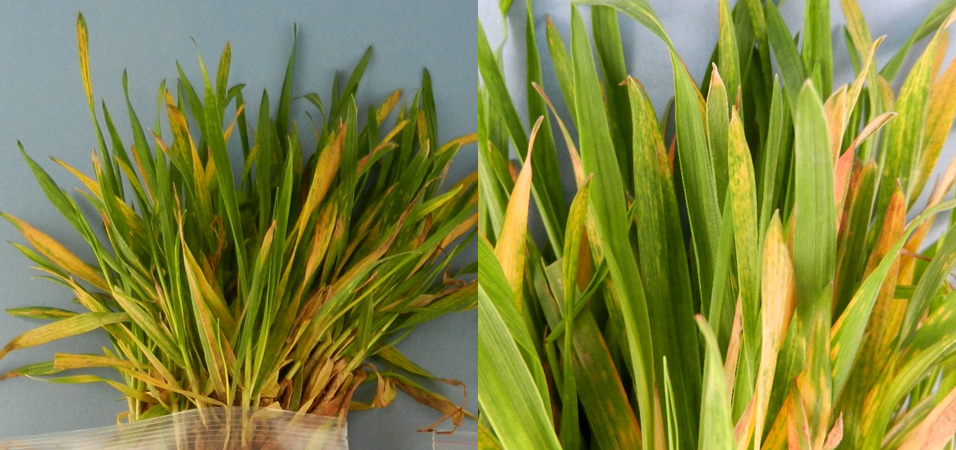
Wheat has greened-up and is actively growing across Indiana. Our southern field plots in Vincennes were at Feekes 8 (flag leaf emerged) earlier this week, while in West Lafayette plots are at Feekes 5 (leaf sheath strongly erect).

Wheat has greened-up and is actively growing across Indiana. Our southern field plots in Vincennes were at Feekes 8 (flag leaf emerged) earlier this week, while in West Lafayette plots are at Feekes 5 (leaf sheath strongly erect).
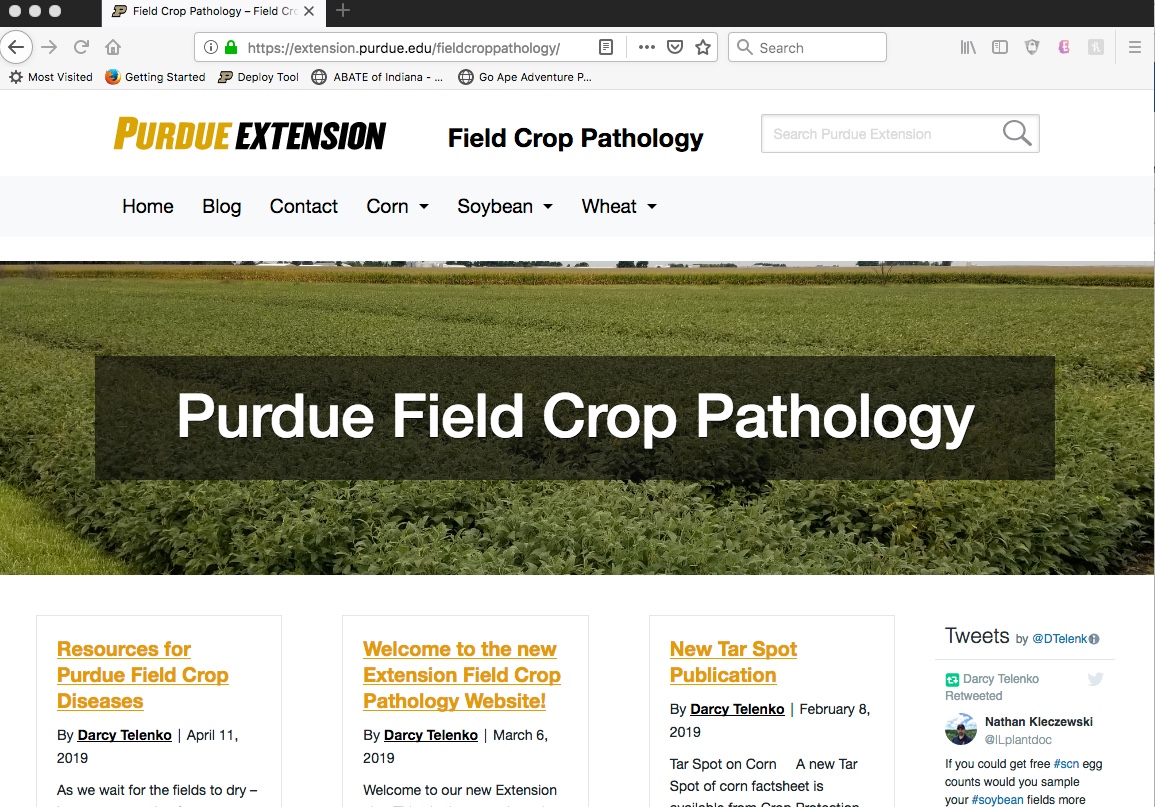
As we wait for the fields to dry – here are a couple of resources that you can check out and bookmark to keep you up to date on field crop diseases this season.
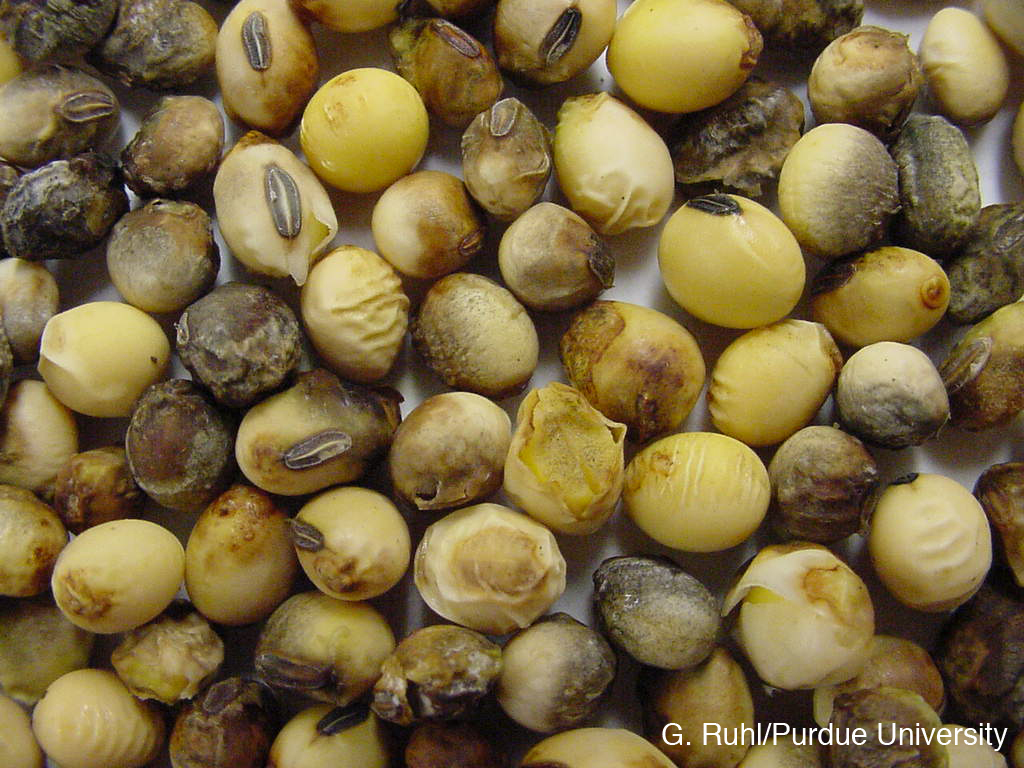
There are a number of fungal soybean diseases that can greatly impact seed quality.
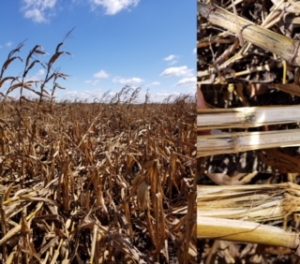
Heavy rains and wind have started to take a toll on corn that has compromised stalks. Many factors can contribute to stalk decline – I am going to focus on the plant pathogenic causes, but note abiotic stresses factors could also play a role such as drought and flooding.
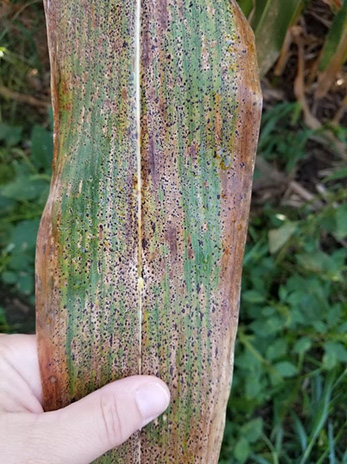
Local epidemics of corn tar spot have growers worried in Indiana about how their corn will finish out the season.
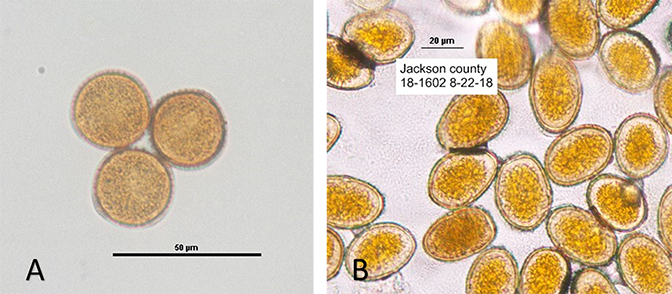
Southern rust of corn was officially confirmed this week in both Knox and Jackson counties Indiana.
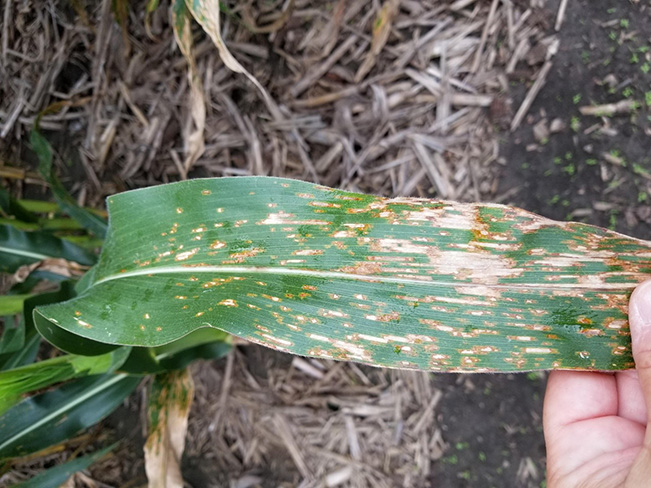
He is studying the dynamics of plant disease and epidemiology of crop diseases and in particular grey leaf spot and northern corn leaf blight in corn. His lab is looking to establish a collection of isolates of these two diseases from across the state for epidemiological work that could be the basis for developing strategies to manage GLS in the future.
We are collecting corn tar spot samples and we need your help! Tar spot of corn is a new corn disease first identified in the United States in 2015 in Illinois and Indiana. It has since been confirmed in Iowa, Michigan, Wisconsin, and Florida.
Physoderma brown spot is caused by Physoderma maydis, the only class of fungi that produce zoospores, spores that have a tail (flagellum), and swim free in water.
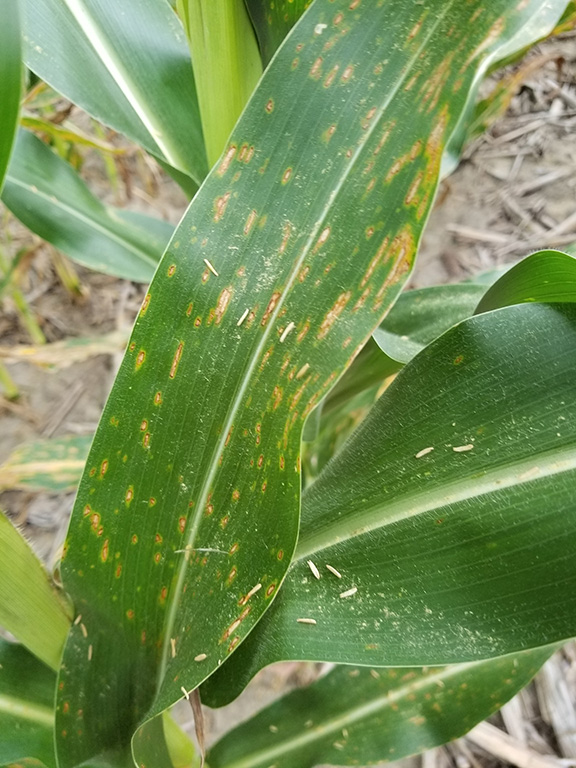
Corn diseases have been on my radar these past few weeks as I am just getting my boots on the ground in Indiana. Many aerial fungicide applications are going out around the region, corresponding to crop maturity and the uptick of grey leaf spot.
© 2024 Purdue University | An equal access/equal opportunity university | Copyright Complaints | Maintained by Pest&Crop newsletter
If you have trouble accessing this page because of a disability, please contact Pest&Crop newsletter at luck@purdue.edu.